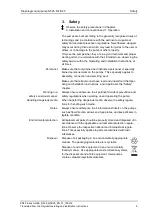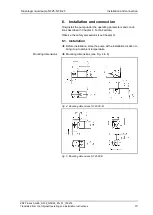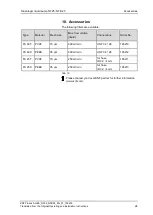
Diaphragm liquid pump NF 25, NFB 25
Installation and connection
KNF Flodos AG BA_NF25_NFB25_EN_07_159615
Translated from the Original Operating and Installation Instructions
13
6.2. Electrical connection
Only have the pump connected by an authorized specialist.
Only have the pump connected when the power supply is
disconnected.
When connecting the device to a power source, the relevant
norms, directives, regulations and technical standards must be
observed.
Connecting the pump
Make sure that the power supply data match the data on the
motor's type plate. The current consumption can be found on
the type plate.
Connect the motor cables. For electrical data see Chapter 4.
Note the proper polarity.
For DC motors:
red motor cable: +
black motor cable: -
6.3. Hydraulic connection
Only connect components to the pump that are designed to
handle the hydraulic data of the pump (see Chapter 4,
Technical data).
Only use hoses that are suitable for the maximum permissible
operating pressure of the pump (see Chapter 4).
Only use hoses that are sufficiently chemically resistant to the
liquids being transferred.
6.3.1. Connecting the pump
Arrows on the pump head indicate the flow direction.
Remove the protective caps.
Connect the suction and pressure lines.
Keep the suction line as short as possible in order to keep the
priming process as brief as possible.
If the pump is used to build up pressure, make sure that all
transition joints between hose and pump are secure in order to
ensure that the hoses cannot come off.
Check that the hoses and transition joints (hose connect-
or/hose) are fitted correctly and securely.
Check that the system is leak-tight.
Connected
components
Hoses













































